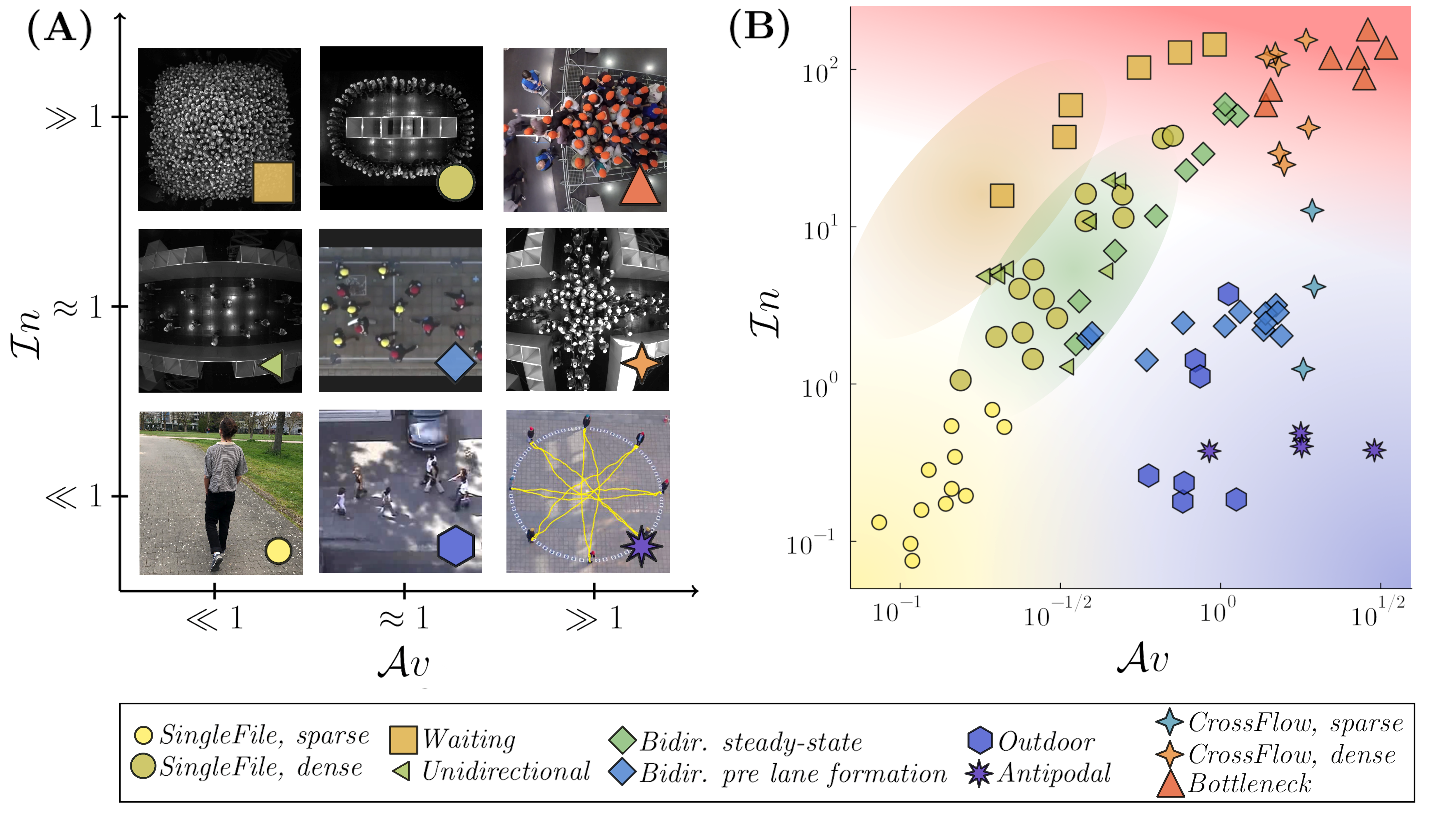Follow us on Google News (click on ☆)
Physicists have shown that analytical patterns from fluid mechanics are relevant in the case of moving pedestrian groups, revealing two distinct interaction modes depending on the nature of the flows involved.

Illustration image from Pixabay
Fluid mechanics theory, formalized in its modern version in the 18th and 19th centuries, owes much to Osborne Reynolds (1842-1912), who first understood that different flow regimes (laminar, turbulent, intermittent, gravity-driven, etc.) can always be parameterized by ratios of physical magnitudes of the same dimension (these ratios are called "dimensionless numbers").
Thanks to this observation, experiences differing greatly in spatial scales, constituents, and speeds can be described by the same set of physical equations, thereby allowing the transposition of small-scale experiments (e.g., wind tunnel tests) to real-world applications. This reduction has enabled spectacular progress in research and engineering in aerodynamics or hydrodynamics by validating various approximate models through rigorous laboratory experiments.
In crowd dynamics, the idea that relatively dense pedestrian flows resemble fluid flow has long been proposed, but Reynolds' reasoning to characterize different flow regimes by a set of dimensionless numbers had never been adapted to this context.
In a very recent study, researchers from the Institut Lumière Matière (ILM, CNRS / Université Claude Bernard Lyon 1), Jülich Research Center, and ITP Cologne (Germany) have sought to characterize pedestrian flows based on dimensionless numbers.
For this, they have utilized a broad range of empirical and experimental measurements, allowing them to classify the wide variety of pedestrian flows into relatively homogeneous groups of situations, dominated by the same processes in which similar types of pedestrian arrangements are observed (see figure). They demonstrated that two dimensionless numbers are crucial, named "intrusion" (In) and "avoidance" (Av).
The first, related to local density, quantifies intrusions into private spaces (each pedestrian's "social bubble"), taking very high values when pedestrians are forced into physical contact. The second accounts for the risks of imminent collision by comparing the estimated time before a potential collision to a predictive time horizon.

Figure: Classification of crowd flows (schematic, on the left, and supported by empirical data, on the right) using two dimensionless numbers: "In" reflects the violation of each individual's "social bubble" while "Av" describes the imminent collision risk.
Extract from a figure in the referenced article, reproduced with the authors' permission.
© A. Nicolas.
These quantities describe different mechanisms: to caricature, in a dense but uniformly moving crowd or in a static situation, a pedestrian primarily seeks to maintain their private space, without fear of collisions, as seen in "waiting room" or "queue" experiments. In contrast, sparse walkers or joggers with no common direction mainly focus on avoiding trajectories that could lead to a collision.
Thus, crowds do not all flow in the same manner and using these dimensionless numbers helps bring order to the multitude of conceivable situations, categorizing them based on these numbers' values. In light of these findings, it becomes possible to specify the validity regime of various competing models that simulate pedestrian dynamics, either for academic purposes or practically in designing new buildings and predicting internal flows.
These results are published in the journal PNAS Nexus.
References:
Dimensionless numbers reveal distinct regimes in the structure and dynamics of pedestrian crowds,
Jakob Cordes, Andreas Schadschneider, Alexandre Nicolas, PNAS Nexus, published on March 19, 2024.
Doi: 10.1093/pnasnexus/pgae120
Open archive: arXiv